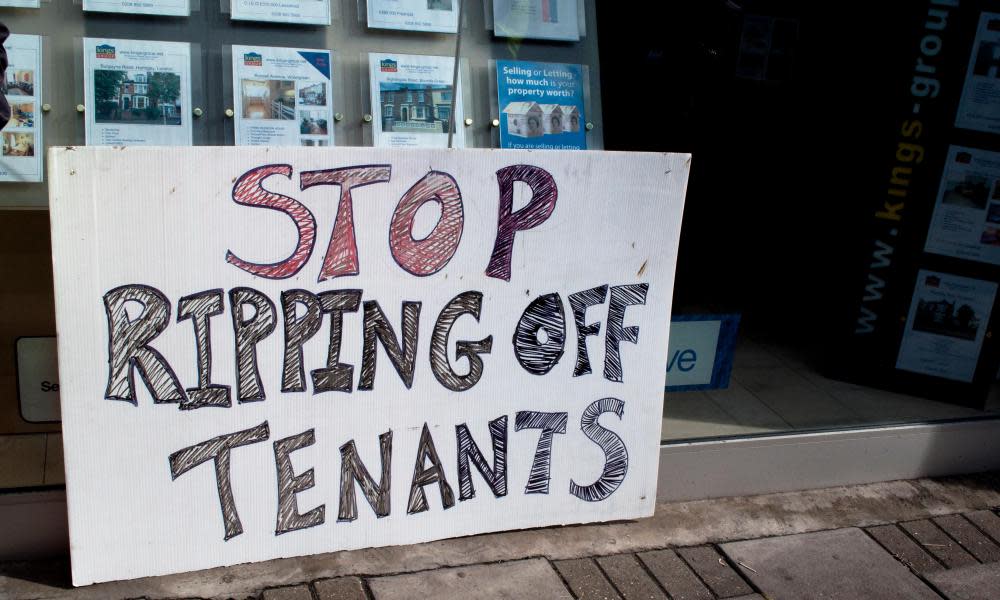The verdict is in: George Osborne’s help-to-buy scheme has been an utter disaster

According to a damning Lords report, it isn’t just a waste of £29bn, it has made Britain’s unequal housing market even worse
A rogue prime minister on the verge of defenestration drives out news of almost anything else. But housing usually languishes in the forgotten in-tray anyway. It sits low in voters’ and government concerns: the last 17 housing ministers remained in post, on average, for barely more than a year. Housing stories fill news pages, but only if they provide an opportunity to gloat over escalating property prices.
So it shouldn’t be a surprise that a shocking report on a Conservative flagship housing policy fell below the news radar. The Lords-built environment committee has revealed that all of the £29bn spent on the help-to-buy scheme has been wasted. The scheme gives subsidies for homeownership, but all they do is “inflate prices by more than their subsidy value”. They “do not provide good value for money”, which would be “better spent on increasing housing supply.”
The report, chaired by the Tory ex-minister and businesswoman Lucy Neville-Rolfe, shows that Margaret Thatcher’s signature right-to-buy policy lies at the heart of the ballooning housing crisis. The council house sales under this policy symbolised a rolling back of the state to create a property-owning, share-holding, Tory-voting electorate. (Pollsters use homeownership as a strong indicator for voting Conservative.) Councils that were forced to sell at knockdown prices were also barred from using the receipts to replenish the council housing stock. This meant a bargain for the 2 million tenants who bought council homes, but a disaster for the low-earners who came after.
Related: Average UK first-time buyer is now older than 30, says Halifax
In 1980, a third of people lived in socially rented homes, at genuinely affordable below-market rents. That’s now fallen to 17%. Over the past 30 years, England has seen a net loss of 24,000 social homes every year on average. Another 29,000 social homes vanished alone through sales and demolitions.
Those disappeared tenants end up in the expanding private-rented sector. Instead of paying for lasting brick-and-mortar council homes, the taxpayer subsidises private landlords through housing benefit, costing £22bn a year. The Lords report quotes the housing analyst Toby Lloyd: “The private rented sector is by far the most expensive, by far the lowest quality and by far the least popular. It is absolutely the worst possible tenure for almost everybody in it.”
Of the many destructive Tory social policies, help to buy, announced in 2013, was always an especially egregious example of naked vote-getting. Its creator, George Osborne, knew a subsidy to buy homes worth as much as £600,000 would just inflate prices – and it did. It slightly speeded up the purchase date for those who were already likely to buy, often via family help. More people on high incomes – over £80,000 – use the scheme than low earners. Yet ownership is still falling and the age of first-time buyers keeps rising.
Bringing up a family in a private-rented home means living under the shadow of eviction, with private landlords using section 21 orders to evict tenants for no reason. I once followed the misfortunes of one family that was forced to move, time and again, sometimes having to move their children’s schools too, often living in squalor, once through a long winter with a broken boiler. They weren’t destitute, both parents were in work, but their children were deprived of a permanent home in their early years. Last month’s excoriating report by the National Audit Office (NAO) on private renting found that in 29,000 instances in one year, “households were, or were at risk of being made homeless following an eviction that was not their fault”.
I heard a few of those voices of distress last week when I listened in to the helpline at the housing charity Shelter, hearing the struggles of those who should be in social housing. Among the many homeless, Jay (not her real name) was typical of those NAO findings. Frail and on personal independence payment, she was suddenly facing eviction. Why? She complained to her landlord about frequent sewage flooding; getting no response she called environmental health. Her landlord, taking revenge, is evicting her, needing no reason. The NAO says a quarter of private rentals are of “non-decent” standard, and 13% have at least one serious hazard. The government long ago promised a bill to protect tenants, abolishing section 21 evictions, but there’s no sign of it.
What hope is there of “levelling up”? Access to quality, affordable housing is going into reverse, according to a report from Legal & General this week. Property is where the nation’s wealth is stored, and there it stays – useless and unproductive. Who dares break the taboo on the sacred right of homeowners not to be taxed on their ballooning unearned property wealth? A hypothecated tax spent directly on council housing would link the winners to the growing numbers of those who lose out in Britain’s grossly dysfunctional housing market.
Polly Toynbee is a Guardian columnist

 Yahoo News
Yahoo News 
